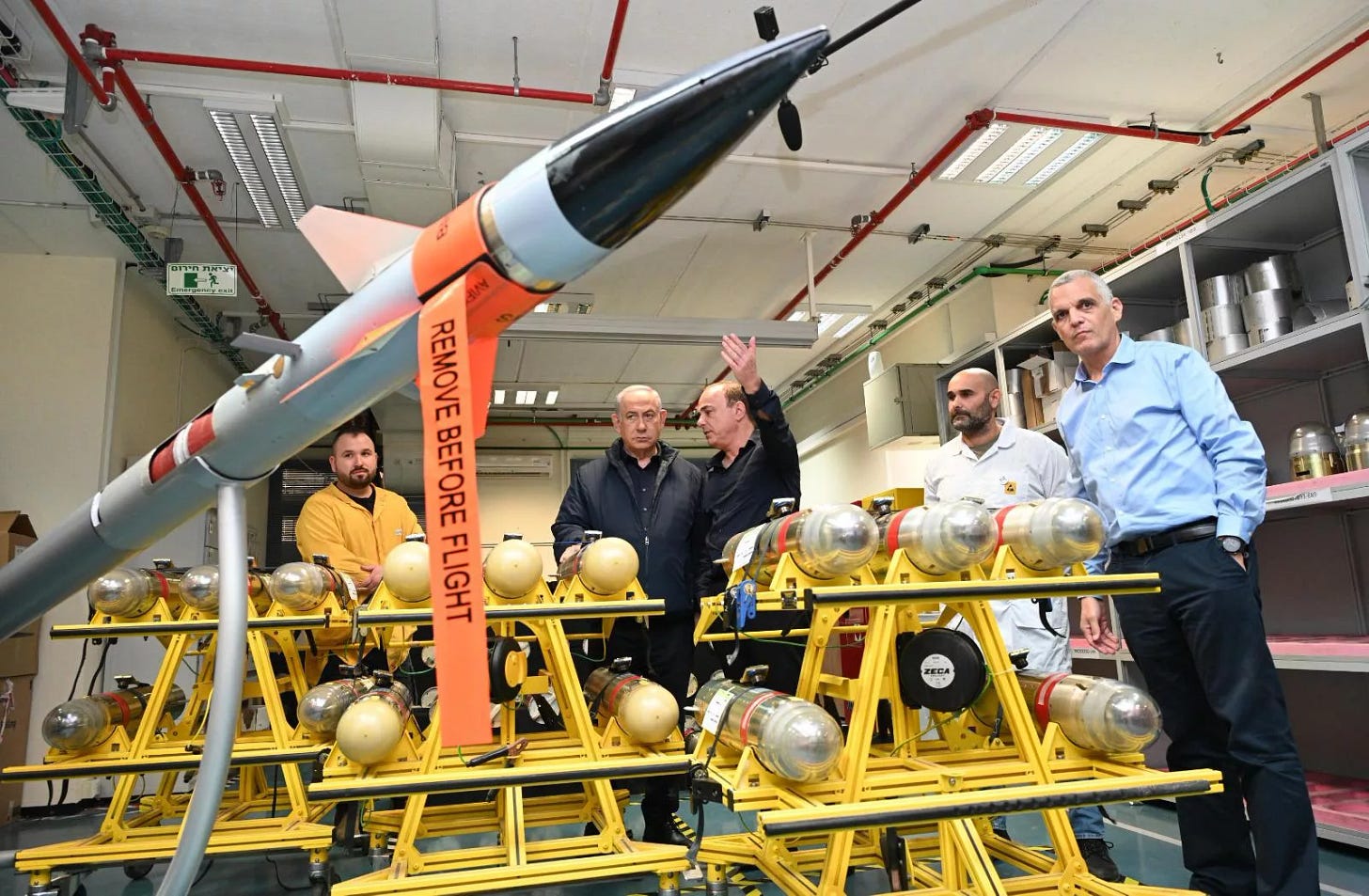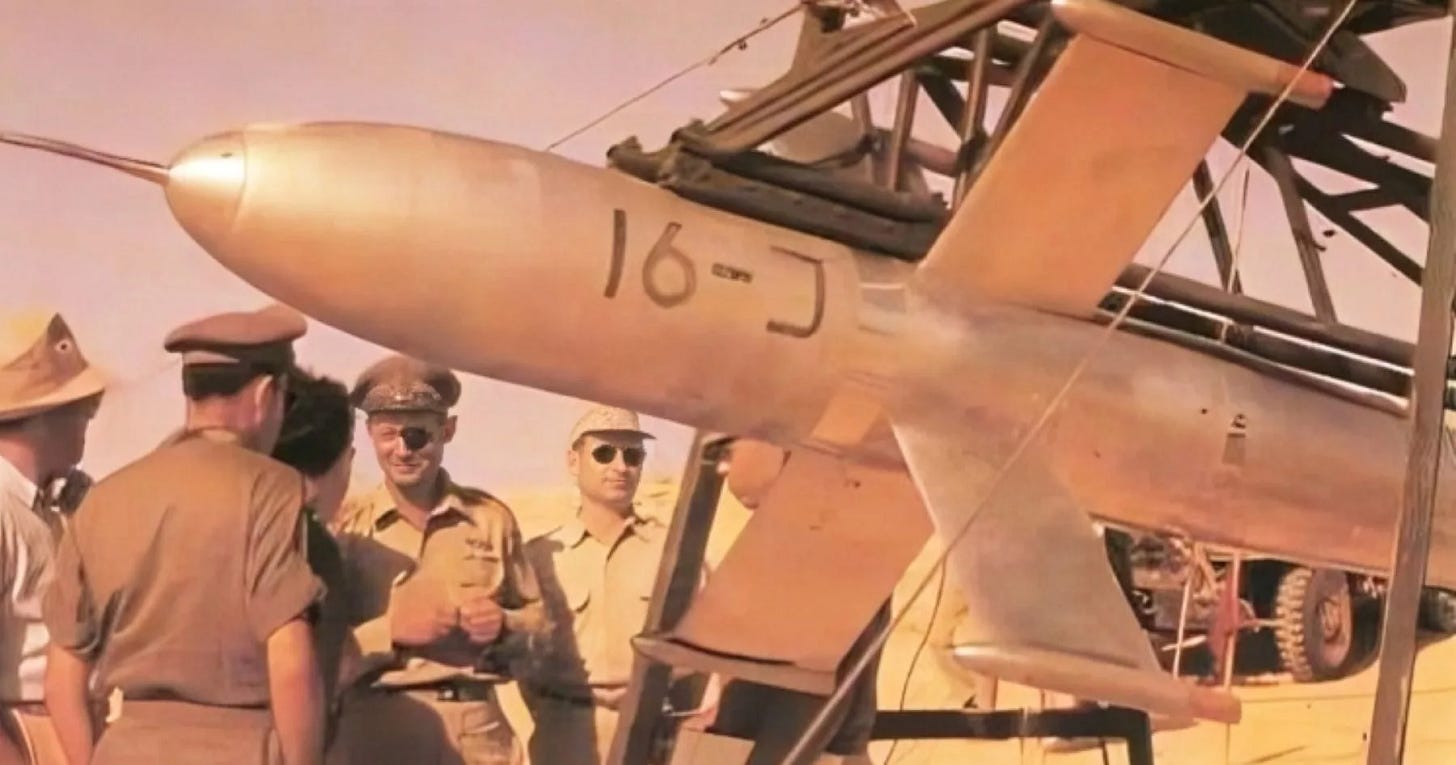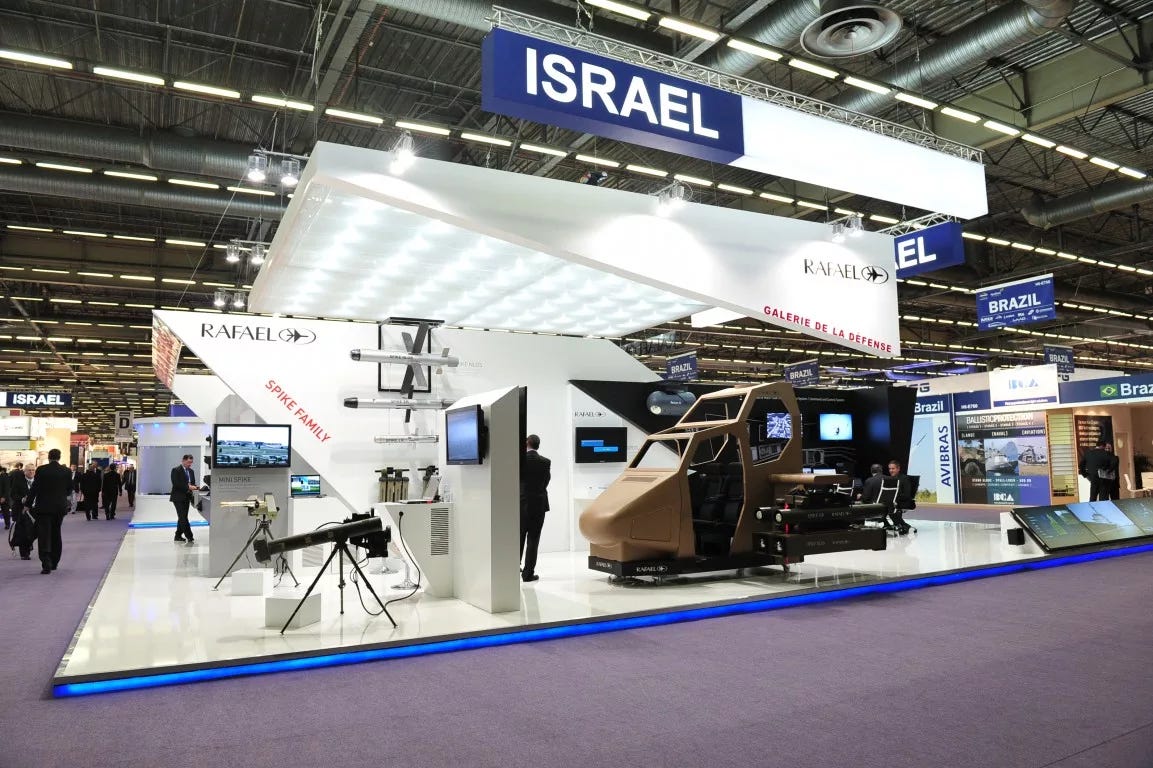In early June, Spain’s Ministry of Defense announced the suspension of a contract for the production of the Spike anti-tank missile system, intended for the country’s ground forces. The ministry also confirmed the revocation of the operating license for the Israeli defense company Rafael in Spain, and the beginning of a search for non-Israeli alternatives for military cooperation and development.
The suspended deal, worth $287 million, involved the delivery of 1,700 anti-tank missiles. In response, Rafael’s CEO, Yoav Turgeman, claimed that cooperation with Spain was proceeding as usual, stressing that replacing weapon systems after years of training is no easy task.
He asserted that the company had received no official notice of cancellation and expressed no concern over the matter, noting that Rafael currently holds orders valued at more than $8.591 billion.
But Rafael’s prominence in the media isn't merely due to its swelling defense contracts. The company is deeply intertwined with Israel’s wars on Gaza, where the besieged strip serves as a live testing ground for the effectiveness and precision of its systems. Its facilities have also come under fire from Lebanese resistance forces, notably before the ceasefire at the end of last year.
Moreover, Rafael has long been a central figure in Israel’s military diplomacy, spearheading global defense partnerships and arms networking campaigns.
Rafael: The Story of Israel’s Military Self-Sufficiency
Zionist militias began producing weapons as early as 1933, relying on scavenged parts from World War II and repurposing them for their colonial designs. After the Nakba of 1948, amid international censure, Arab outrage, and a global balancing act between oil interests and Israel’s survival, the nascent state faced constraints on arms imports.
Western powers, wary of triggering a full-scale Arab military response, adopted a cautious approach. Britain halted its military support to Israel, France canceled a Mirage fighter jet deal, and the United States had not yet become a direct military supplier.
In response, Israel doubled down. It refused to sign international treaties on non-proliferation, including the NPT and conventions on chemical weapons. The Arab League, meanwhile, applied diplomatic pressure to restrict arms sales to Israel, with some states threatening to sever ties or cancel oil contracts.
Amid this isolation, David Ben-Gurion launched a secretive initiative to fuse science and arms production, aiming to secure Israeli military supremacy in the region. The mission was entrusted to Shlomo Gur, a Ukrainian-Jewish engineer who served with the Haganah during the Nakba and demonstrated advanced weapons expertise.
Gur helped establish 56 fortified settlements and conceptualized the "Tower and Stockade" strategy.
He founded and led Israel's Science Corps, later known as HEIL HAMADAH, collaborating with Yitzhak Bentov to develop explosives and build Israel’s first rockets. This corps evolved into Unit EMET in 1952, which in 1954 became the Armament Development Authority—what is today known as Rafael.
This unit laid the groundwork for Israel’s domestic defense industry, compensating for the lack of foreign imports. By 1958, it was reorganized to supply Uzi submachine guns and rebuild French-assisted missile systems, preparing the Israeli military for the 1967 war.
Still part of Israel’s Ministry of Defense, Rafael’s mission expanded with the evolution of military science. It developed bombs, landmines, and improvised explosive devices and launched its first domestically produced air-to-air missile, the Shafrir, later used in the 1973 war.
During the 1980s and 1990s, Rafael introduced electronic jamming systems that allowed Israel to intercept enemy communications and launch coordinated operations. These systems eventually formed the basis for modern radar-guided targeting.
Its collaborations spanned across all military branches. With the Air Force, Rafael developed Popeye air-to-ground missiles with laser and TV-guided targeting. For ground forces, it produced anti-tank systems, including the now-renowned Spike missile.
Rafael's talent pool consisted mainly of Eastern European Jewish scientists, many with aerospace backgrounds or prior military service. Its ranks expanded to include computing, AI, and systems engineers—among them Yoav Har-Even, a former artillery officer, and Yoav Turgeman, a retired naval officer and former executive at Israel Aerospace Industries.
From Secret Lab to Global Supplier
Despite its innovations, Rafael struggled to profit due to its tight ties with the Ministry of Defense, limiting its global marketing and export capabilities. The post-Oslo era further stifled growth, as regional tensions eased and private competitors—like Elbit Systems—emerged with fewer restrictions and greater international reach.
By 1995, Rafael was losing $120 million annually. Then-Prime Minister Yitzhak Rabin launched a restructuring campaign, transforming the firm into a government-owned limited company. Polish-born Amos Joseph, a Palmach veteran and former general turned nuclear scientist, was appointed to lead the overhaul.
Under Joseph’s leadership, Rafael began allocating 10% of its work to R&D, gained export autonomy, and entered global markets. By 2001, its sales had reached $830 million, with net profits of $37 million, marking its entry into the competitive world of international arms.
By 2006, during the war in Lebanon, Rafael deployed interception and tracking systems that elevated Israel’s air, land, and sea operations. The company rebranded as Rafael Advanced Defense Systems Ltd.
In the 2008 and 2014 Gaza wars, it showcased the Iron Dome, David’s Sling, precision-guided bombs, white phosphorus and cluster munitions, bunker busters, and more. This battlefield testing drew global buyers and catapulted Israel into the top tier of global arms suppliers—trailing only the US and Russia, and competing closely with France, Britain, and Germany.
Rafael’s competitive edge lies in its continuous exposure to warfare, the battlefield experience of its engineers, and live testing of weapons in Palestinian territories and global conflict zones. Its products are often "donated" to allies such as Ethiopia, South Sudan, Myanmar, and India.
By 2015, Rafael posted a net profit of $127 million, rising to $130 million in 2016, with sales reaching $2.291 billion and orders totaling $3.1 billion. A 12% rise in demand signaled growing global reliance on its systems.
In the 2021 Gaza war, the company broke records with over $10 billion in arms sales in just two weeks. These included drones, Spike missiles, half-ton and quarter-ton bombs, and four newly tested missiles—whose footage was used in promotional campaigns targeting allied nations.
On the Rubble of Genocide
In September 2024, Hezbollah rockets struck Rafael’s northern Israel headquarters for the second time during the support war. That same month, a resistance ambush in Rafah killed Daniel Mimoun Toav, son of Rafael’s deputy chairman Shlomo Toav.
Yet these blows had little impact on Rafael’s growth. Its production and weapons testing proceeded unimpeded, and global collaborations remained strong. Rafael now oversees some 40 subsidiaries across the US, Europe, India, the UAE, and Africa. Direct attacks on its headquarters have proven largely symbolic.
In 2024, net profits reached $272 million, with a 60% production surge and $4.8 billion in sales. Orders rose to $17.76 billion. Rafael ranked 36th globally among arms manufacturers, and second in Israel after Elbit Systems. Its fourth-generation Spike missiles are now used by over 39 countries.
Popeye missiles were deployed in response to Iran’s 2024 missile strike. Despite some technical criticisms, they caught the attention of Germany, which signed a $14 billion deal with Rafael. Meanwhile, Rafael continues to test its SPYDER air-defense system against Houthi missiles from Yemen, and markets the “Windbreaker” active protection system for tanks—first tested in Gaza, then in Ukraine.
Strikingly, half of Rafael’s net profits go directly to Israel’s government. Its explosive sales growth began during the final quarter of the Gaza war and continues unabated. Over half of its defense and training contracts are now international, casting doubt on European claims—such as those from Spain and Italy—about halting investments or suspending military cooperation with the firm.
Rafael’s latest project is the Iron Beam, the world’s first high-powered, open-architecture laser weapon system compatible with land, air, and naval platforms. It can intercept coin-sized objects from 10 kilometers away for just $1 per shot using electric power.

This new system is set to debut at the world’s largest defense expo in Paris—ironically, amid the ongoing genocide.
In the end, Rafael’s portfolio is not just a marker of technological advancement—it is a mirror reflecting a world governed by false ethics and selective outrage. A world enamored by “smart strikes” yet indifferent to scorched bodies. While rubble still smolders, it does not rush to document war crimes or end them—but races instead to ink bigger arms deals.
In a world that feeds on carcasses, death itself becomes an engineering marvel. And in the fog of such devastation, one piercing question remains: how much more annihilation must it take to rein in a state that only thrives on explosions and ashes?





